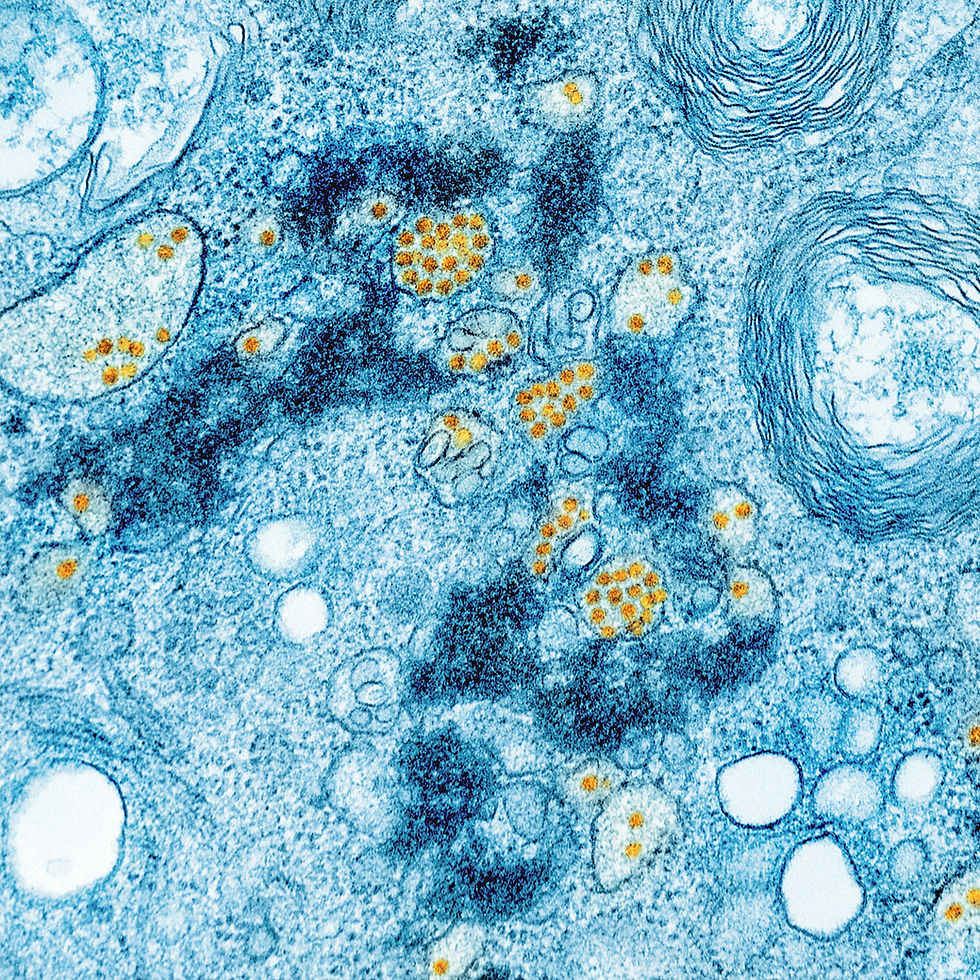Real-Time Microbes: Inside the Study That Changed the Game
- Adriano dos Santos
- Aug 6
- 5 min read
For years, the gut microbiome was viewed as a static inventory of species. Identify the species, check the list, done. But microbes aren’t just present. They’re performing, responding, and changing by the hour.
And the timing of their activity may be the key to everything from metabolism to disease.

Table of Contents:
How the Study Worked
The Functional Shifts They Found
Why Metatranscriptomics Was Key
What It Means for Human Health
About me
I am Adriano dos Santos, MSc, rNutr, IFMCP, MBOG, RSM, a Functional Registered Nutritionist, Sleep Medicine & Microbiome Researcher and Educator.
Introduction
Advances in microbiome science have revealed that our gut bacteria don't simply exist. They follow rhythms, react to our behaviours, and even influence our metabolism in real time. Yet most tools for studying them have been blind to these dynamics, capturing only a snapshot of their genetic potential, not their actual function. That’s where metatranscriptomics comes in.
By measuring which microbial genes are actively being used, this technique offers a live feed of microbial activity. Researchers are now using it to uncover how feeding schedules, inflammation, and obesity alter not just the composition of the microbiome but its behaviour. This post explores a study that used metatranscriptomics to do exactly that and why it might reshape how we think about timing in both research and therapy.

How the Study Worked
Researchers used metatranscriptomics to capture the real-time behaviour of the gut microbiome in mice (Ramos S.F. et al., 2025). They compared two feeding conditions: ad libitum (eating freely throughout the day) and time-restricted feeding (TRF, limited to the night-active phase for mice).

Every four hours over a full day, they collected stool samples and sequenced RNA transcripts, capturing which microbial genes were being actively expressed at each time point. This allowed them to map how microbial functions shifted hour by hour in response to feeding rhythms. The TRF group showed strong, synchronized gene expression cycles, while the ad libitum group showed disorganized or flattened activity.
To confirm that these differences reflected functional changes rather than shifts in microbial composition, the team performed parallel metagenomic profiling, which revealed largely similar taxonomic profiles between groups. This confirmed that feeding windows influenced transcriptional activity, not community structure. These results highlight the distinct advantage of metatranscriptomics over DNA-based approaches, as traditional metagenomics failed to capture dynamic shifts in microbial gene expression during inflammatory conditions (Jovel J. et al., 2022).
The Functional Shifts They Found
What made this study so groundbreaking was how it captured not just microbial presence but time-dependent function. In the TRF group, microbial genes tied to amino acid metabolism, short-chain fatty acid (SCFA) production, and bile acid processing followed strong diurnal oscillations, rising and falling in synchrony with the feeding schedule (Ramos S.F. et al., 2025). These microbial functions are not trivial. They shape host energy homeostasis, gut barrier integrity, and inflammation.
The study revealed, for instance, that Bacteroides species upregulated genes involved in glutamate and aspartate metabolism at night, when feeding occurred, and downregulated them during the fasting phase. In contrast, the ad libitum-fed mice showed disrupted or flattened microbial rhythms, a finding that aligns with human data from patients with obesity, where microbial gene expression is similarly dysregulated (Granata I. et al., 2020).

Human samples in that study also revealed a decrease in microbial gene expression related to energy metabolism and transport functions, indicating that microbial inactivity may contribute to metabolic impairment in obesity (Granata I. et al., 2020). When viewed together, these findings suggest that both feeding time and metabolic health influence microbial function, with TRF offering a potential strategy to restore microbial rhythmicity and improve host outcomes (Ramos S.F. et al., 2025).
Why Metatranscriptomics Was Key
This level of insight would not have been possible using traditional sequencing methods. Metagenomics can tell us about the genetic potential of the microbiome, but not whether those genes are actually active (Jovel J. et al., 2022).
Metatranscriptomics, in contrast, captures real-time gene expression, revealing microbial activity patterns and their alignment with host behaviours like eating. In an inflammation model, it exposed microbial pathway suppression that would have been invisible to DNA-based methods (Jovel J. et al., 2022). This reinforces the idea that gene activity, not just presence, is central to understanding how the microbiome influences health.
Human duodenal samples revealed that despite the presence of key microbial taxa, many beneficial metabolic genes were underexpressed in individuals with severe obesity (Granata I. et al., 2020). These suppressed genes were linked to energy metabolism, amino acid transport, and microbial stress responses. These functions are critical for host-microbiota balance.

In contrast, feeding time in mice was shown to restore these same functions through rhythmic gene activation, highlighting the potential of behaviour-based interventions to improve microbial function and host health (Ramos S.F. et al., 2025).
Together, these studies suggest that functional profiling provides a more accurate and dynamic picture of microbial contributions to health and disease.
What It Means for Human Health
The implications of this microbial timing go beyond mice. Metatranscriptomic analysis of human duodenal samples revealed significant shifts in both microbial and host gene expression in individuals with severe obesity (Granata I. et al., 2020). These functional disruptions parallel the desynchronized activity seen in the ad libitum mice, pointing to a possible link between disrupted microbial rhythms and metabolic dysfunction.

Metaproteomic profiling has also shown that many differentially expressed microbial genes correspond to measurable changes in proteins involved in carbohydrate metabolism and oxidative stress (Zhang X. et al., 2025). This layer of analysis helps verify that transcriptional signals translate to functional output at the protein level.
In the same human samples, researchers found that genes involved in nutrient absorption and immune signaling were consistently downregulated in the host epithelium (Granata I. et al., 2020). Such host-microbe interactions provide a more complete picture of how gut dysfunction unfolds at both molecular and systems levels. Together, these methods build a functional, real-time picture of the microbiome, one that may eventually guide therapeutic decisions based on when (not just what) microbes are active.
Conclusion
The microbiome is no longer a biological mystery. With tools that capture its real-time activity, it is now understood as a dynamic and responsive system.By recognizing its underlying rhythms, we move closer to aligning medical interventions with the natural timing of microbial function.
References:
Ramos S.F., Siguenza N., Zhong W., Mohanty I., Lingaraju A., Richter A., Karthikeyan S., Lukowski A., Zhu Q., Nunes W., Zemlin J., Zech Xu Z., Hasty J., Dorrestein P., Panda S., Knight R., Zarrinpar A. (2025). Metatranscriptomics uncovers diurnal functional shifts in bacterial transgenes with profound metabolic effects. Cell Host Microbe. DOI: 10.1016/j.chom.2025.05.024
Granata I., Nardelli C., D’Argenio V., Tramontano S., Compare D., Rosario Guarracino M., Nardone G., Pilone V., Sacchetti L. (2020). Duodenal Metatranscriptomics to Define Human and Microbial Functional Alterations Associated with Severe Obesity: A Pilot Study. MDPI. Microorganisms. https://doi.org/10.3390/microorganisms8111811
Jovel J., Nimaga A., Jordan T., O’Keefe S., Patterson J., Thiesen A., Hotte N., Bording-Jorgensen M., Subedi S., Hamilton J., Carpenter E., Lauga B., Elahi S., Madsen K., Ka-Shu Wong G., Mason A. (2022). Metagenomics Versus Metatranscriptomics of the Murine Gut Microbiome for Assessing Microbial Metabolism During Inflammation. Frontiers in Microbiology. https://doi.org/10.3389/fmicb.2022.829378
Zhang X., Ning Z., Mayne J., Figeys D. (2025). Clinical Microbiome Analysis by Mass Spectrometry–Based Metaproteomics. Annual Reviews. https://doi.org/10.1146/annurev-anchem-071124-113819




Comments